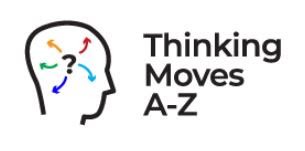Wellington College International, Tianjin
Thinking Moves Case Study
Before we began with Thinking Moves…
Before we took on Thinking Moves, our school's level of understanding and teaching of metacognition wasn't great. Staff had an understanding of what metacognition was but lacked the knowledge and tools to effectively implement it and make it visible to learners.
The impact
Overall Classroom Environment: Collaborative Learning and Ownership: The classroom environment has become more collaborative and supportive, with students taking greater ownership and responsibility for their learning. This change is indicative of effective metacognitive teaching practices being employed by teachers.
Observations: Improved collaboration and discussion of thought processes among students. Increased motivation and a positive attitude towards learning. Practical Strategies for Teaching Metacognition: Teachers have acknowledged that Thinking Moves provided them with concrete strategies to incorporate metacognition into their teaching methods. Prior to this, they knew about metacognition but lacked the tools to effectively teach it.
Enhanced Teaching Techniques: Teachers noted that they now have the tools to make metacognition a regular part of classroom activities, which they previously found challenging
What I like most about Thinking Moves
Thinking Moves are instrumental in promoting metacognition in the classroom. They provide concrete strategies for both teachers and students to not only understand metacognitive processes but also to actively engage in and practice them. What I like best about Thinking Moves is that they make learning more visible and accessible, helping students to reflect on their thinking, understand their learning processes, and develop skills to manage their own learning more effectively. This empowers learners to take charge of their education, leading to deeper understanding and improved academic performance.
Impact on learning
Students are more confident in their abilities to tackle new and challenging tasks because they have a clearer understanding of their own thinking and learning strategies. Learners are more proactive in seeking solutions and strategies to overcome difficulties, which fosters a more resilient and independent approach to their studies. The overall classroom environment has become more collaborative, with students frequently discussing their thought processes and learning techniques with one another. There is a heightened sense of ownership and responsibility among students regarding their own education, leading to increased motivation and a more positive attitude towards learning. In essence, Thinking Moves has transformed our learning environment by making the process of learning more transparent and accessible, which empowers students to take charge of their education and achieve greater academic success.
What have staff and students said?
Staff: "Thinking Moves has been a game-changer for our teaching methods. It provides us with practical strategies to help students engage actively with their learning processes." "The visibility and accessibility of learning have improved tremendously. Students are now more reflective and can manage their learning more effectively." "Before Thinking Moves, we knew about metacognition but didn't know how to foster it in our students. Now, we have the tools to make metacognition a part of everyday learning."
Students: "I like how Thinking Moves helps me reflect on how I think and learn. It makes me understand my learning habits and how I can improve them." "Thinking Moves has made learning more fun and interesting. I feel more in control of my studies." "I never knew I could track my own learning like this. It has helped me become better at organizing my thoughts and managing my time."
Melissa Meikle
Literacy Lead, Wellington College International, Tianjin
